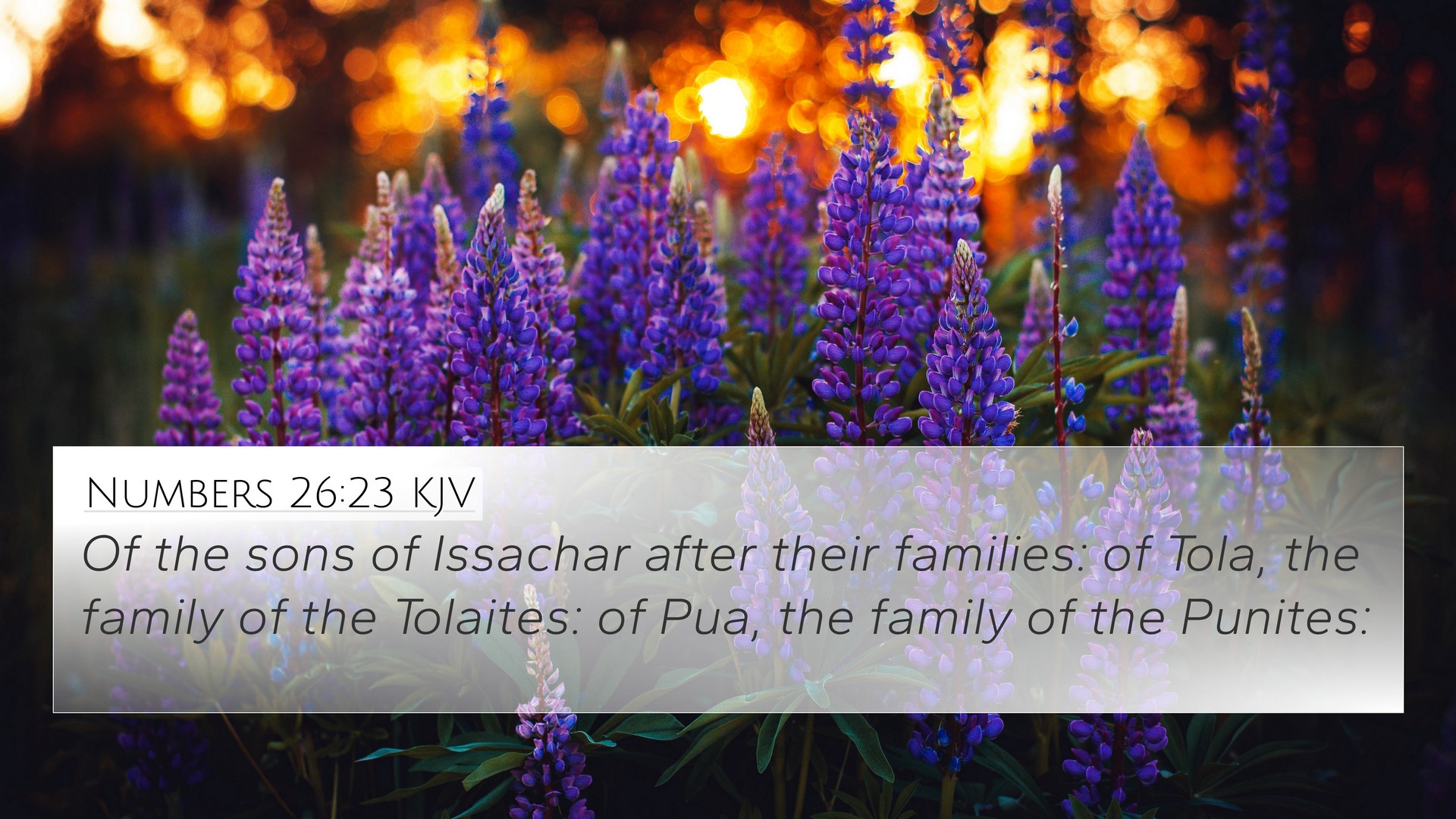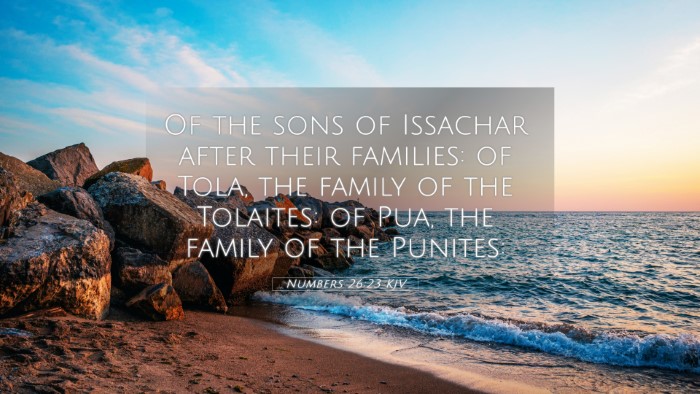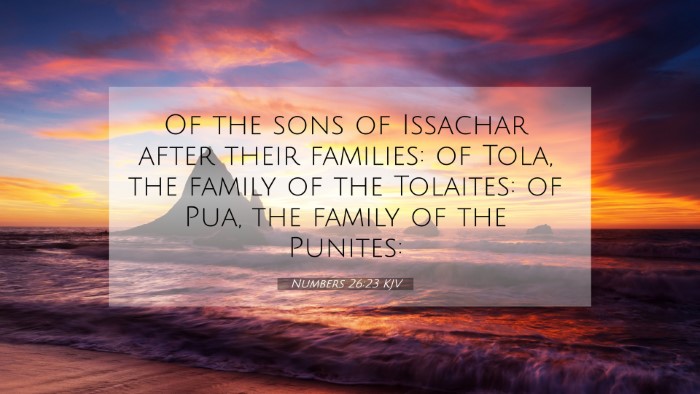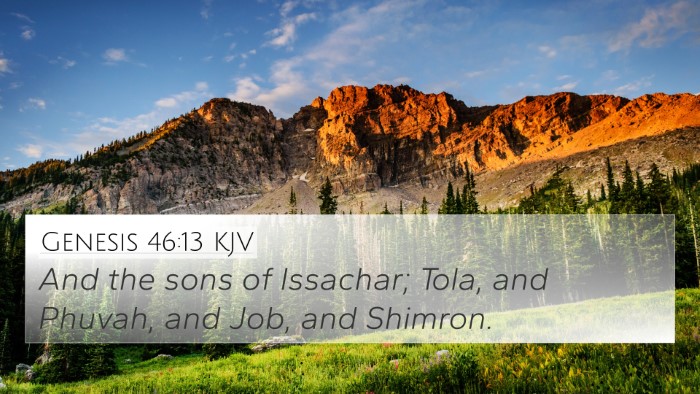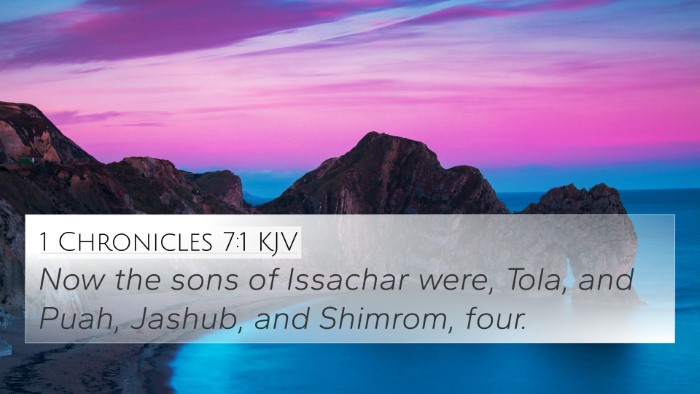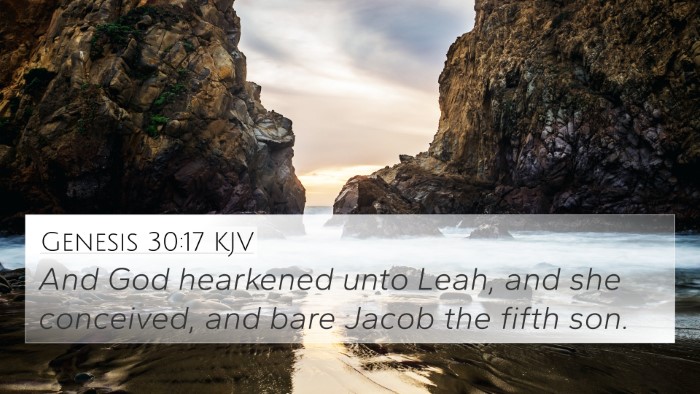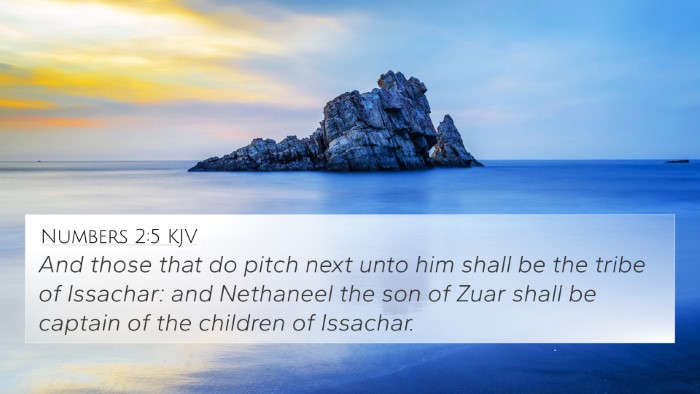Understanding Numbers 26:23
Verse: Numbers 26:23 - "The sons of Zebulun after their families: of Sered, the family of the Seredites: of Elon, the family of the Elonites: of Jahleel, the family of the Jahleelites."
Overview
This verse is part of a larger narrative in the Book of Numbers that focuses on the census of the Israelites, which was conducted after their journey through the wilderness. The mention of the families of Zebulun highlights the importance of lineage and tribal identity within the Israelite community.
Insights from Commentaries
The collective insights of various public domain commentaries provide a richer understanding of this passage:
-
Matthew Henry: Henry emphasizes the significance of the family units and how they reflect God's covenant promise to Israel. He interprets the genealogical records as not just a historical record but as vital to understanding God's faithfulness and the heritage of faith passed down through generations.
-
Albert Barnes: Barnes notes that the detailed enumeration of tribes and families serves to reinforce the structure and organization of the Israelite community, which is essential for their identity. He also discusses Zebulun's role and inheritance, linking it to the blessings bestowed upon the tribe in other parts of Scripture.
-
Adam Clarke: Clarke brings attention to the cultural and historical context of these names, affirming that the families listed were integral to the social fabric of their community. He also connects the naming of these families back to their significance in fulfilling God's promises to Abraham and Jacob.
Thematic Connections
This verse showcases several key themes including:
- Lineage and Heritage: The focus on family names emphasizes the importance of ancestry in the Israelite culture.
- Covenant Identity: Each tribe's descendants reflect the covenant made by God with His people, ensuring they remain a distinct community.
- Divine Faithfulness: As the genealogies unfold, they serve as a reminder of God's promises and His unwavering commitment to His chosen people.
Cross-References and Connections
Numbers 26:23 connects thematically and contextually with several key verses across the Bible:
- Genesis 49:13: "Zebulun shall dwell at the shore of the sea..." highlighting the tribal identity and the blessing given to Zebulun.
- Deuteronomy 33:18-19: Moses blesses Zebulun, linking this tribe’s importance to their role in Israel's future.
- Joshua 19:10: Records the allotment of land to the tribe of Zebulun, showing the fulfillment of God’s promise regarding land ownership.
- 1 Chronicles 12:33: Acknowledges the warriors from Zebulun, illustrating the tribe's capabilities and importance in Israel's military history.
- Luke 2:36: Anna, of the tribe of Asher, indirectly connects back to Zebulun's heritage, further emphasizing the integrative family lines of Israel.
- Hebrews 7:14: Recognizes that Jesus descended from Judah, linking back to the tribes as a reminder of the importance of genealogy in the lineage of Christ.
- Romans 11:1: Paul explains that God has not rejected His people, paralleling the Israelite tribes' enduring significance to God's overall plan.
Cross-Referencing None
This verse offers numerous opportunities for exploration through cross-referencing. Some tools and methods that can be particularly useful include:
- Bible Concordance: A tool for finding specific words or themes across different Scriptures.
- Bible Cross-Reference Guide: A resource that helps to link verses that discuss similar themes or ideas, enhancing understanding.
- Cross-Reference Bible Study: A method of studying Scripture that highlights relationships between verses and themes.
Application for Readers
Understanding the genealogy in Numbers 26:23 and its connections encourages readers to:
- Reflect on their spiritual heritage and the faith passed down through generations.
- Appreciate the structure and community aspect of the Church, connecting it to the historical tribes of Israel.
- Engage in deeper studies that incorporate thematic connections between different Scriptures.
Conclusion
Numbers 26:23 encapsulates essential aspects of identity, heritage, and God's promises. By examining this verse alongside insights from respected commentaries and exploring significant cross-references, believers can gain profound understanding and appreciation for the richness of Scripture.
